#era: continuum
Text


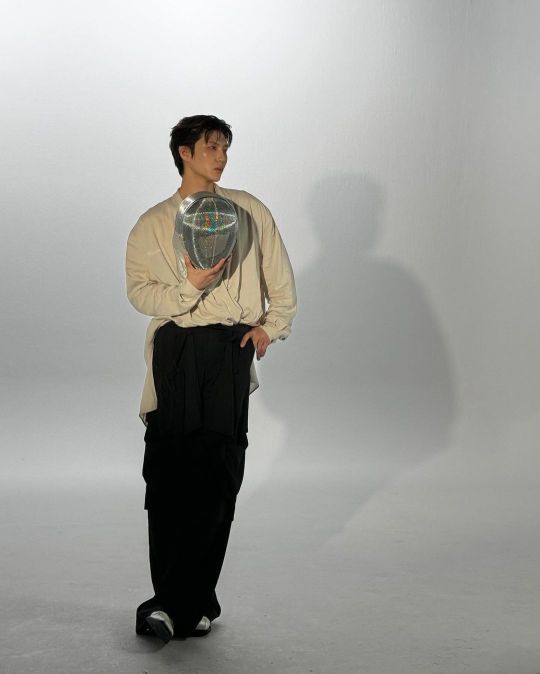

leo (vixx)
#leo#leo vixx#vixx#vixxnetwork#jung taekwoon#taekwoon#era: continuum#kboys#kboysnet#bgnet#bgnetwork#bgarchivee#malegroupsnet#dailybg
13 notes
·
View notes
Text









VIXX - Amnesia [SUIT DANCE]
#vixxnetwork#vixx#vixx amnesia#continuum era#vixx ken#vixx leo#vixx hyuk#leo#hyuk#jaehwan#my gifs: vixx#my gifs: jaehwan#my gifs: leo#my gifs: hyuk#it was SO DAMN HARD TO PICK THE PARTS TO GIF#i wanted to gif every second of it...#ngl its been a while since ive seen a GOOD ASS CHOREO#one that captures all ur attention and doesn't let u look away for a second#vixx' stage presence is insane... and their dancing style and skill have matured so much over the years...#i could go on forever tbh
147 notes
·
View notes
Text
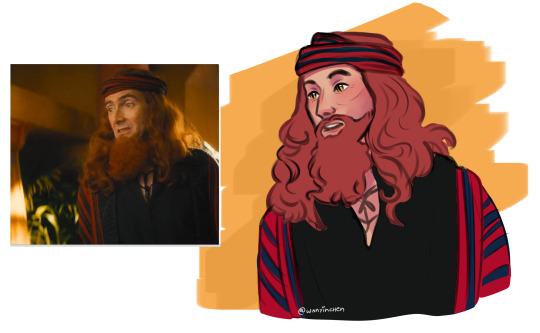
THERE. I FIXED IT. IF WE CAN'T SHAVE THE BEARD THEN I WILL MAKE IT BEARABLE (God, he just now looks like a mix between Gimli and Jesus)
i seriously haven't stopped laughing ever since i watched the new clip just earlier, so i made this in 20 minutes LMAOOO CRAWLEY MY HONEYBUNS, MY DARLING, MY WILEY SERPENT, WHY WOULD YOU DO THIS
#good omens#good omens season 2#crowely#or rather crawley#LMAOOOOOOOOOO#I AM STILL GASPING FOR AIR#when i first saw the “ineffable husbands on the stone pile overlooking the sea” photo i was expecting that Crowley was in her iconic fem#biblical era but NOOOO HAHAHAHHA#WHAT IS THAT POOFY POODLE HAIR CHIN#AT LEAST MAKE IT A FULL BEARD 😭😭😂#honey is this a cry for help? i will claw my way through the space-time continuum if it is#or good lord please dont tell me this is a way to get aziraphale's attention on you I WILL CRY FROM LAUGHING IF IT IS#ITS 2AM AND I HAVENT STOPPED LAUGHING#sha's artsies uwu
283 notes
·
View notes
Text
the only thing that's keeping me from unleashing all 90 nonsensical thought trains in my brain about re1999 lore is the fact that im ruled by this very strict mindset of "if youre gonna do something, do it properly/thoroughly/organized or don't do it at all" which means i get to filter all this nonsense for my writing blog so its neat and cohesive
but it also means that until those posts are finished, im just gonna be seething and violently vibrating bc the information is just in my brain waiting to be released into the wild
#SCREAMS anyway the thoughts are the following#the fact that vertin's spinning wheel which she uses to summon arcanists trascends time and space#because if we're going by times of exhibition. pavia shouldve been the first one to be saved (1990's) but canonically it was regulus#which explains why pavia talks about his mother as if she were alive. because vertin PULLS people regardless of time space continuum#that (and a whole different argument) explains that exhibition dates arent dates of births. theyre the year/era they were taken from#because both matilda and pavia are listed as exhibited in the 1990's#theres 11 years of difference between them. if exhibition date = DOB then it would be impossible#aside from the fact that pavia wouldve had to live up to 2015 AT A MINIMUM to be 25 IF he was born in exactly 1990#but theres characters who have more than one exhibition dates. such as satsuki or regulus (only in global iirc?)#so perhaps its the time they were acknowledged as arcanists by whatever government was established at the time?#regulus makes sense since “mid 20th century” encompasses 1930-1960. which correlate to the prologue. 1st and 2nd chapters of the main story#satsukis is harder to explain. since the times listed are just 1910s and 1920s. but it perhaps relates to her story? since she is trying#very hard to leave her past life as a thief behind#people also complain about sweetheart being 17 because 'she doesnt look 17' and since shes based on marilyn monroe she 'must be older'#sweetheart was exhibited in the 1930's. marilyn monroe was born in 1926. more proof that sweetheart was 17 at the time she was summoned#AND that exhibition dates ARENT DOB
8 notes
·
View notes
Text


we got the usual leo-yelling-while-everyone-else-is-dancing moment

2 notes
·
View notes
Text

#⚡ elektra feel the current ⋆·˚ ༘ *#⚡elektra!era continuum#kpop ff#kpop oc#kpop oc gg#idolverse#idol!oc#kpop au#kpop#kpop roleplay#oc kpop addition#kpop social media au#fake girl group#kpop!fakegroup#kpop oc girl group#idol!rp#idol!group
9 notes
·
View notes
Text
timeless is the best vault song and if you think other wise you're wrong.
#the other vault songs are not as good as say her older songs etc but man. she wrote this stuff as a teenager and ALL by herself#which is sweet#speak now (taylor’s version)#i think she's not gonna release the pop albums until after the tour is over because that plus#the eras tour ongoing would distort the space time continuum
2 notes
·
View notes
Text
Because she was an intentionally mysterious woman initially only seen in a single episode, and before she got an on-air backstory in the recent streaming series, Star Trek supplementary material developed contradictory information on who - or what - Number One, the female first executive officer of the Enterprise, was. To my count, she has four different, completely incompatible backstories in the comics and novels, and this is absolutely unique in Star Trek, which usually keeps it consistent.

Peter David, in his New Frontier novels, identified Number One as a long lived immortal human mutant (like Flint from the original series) named “Morgan Primus” who was an early genius in cybernetics and artificial intelligence, which is why the Enterprise computer has her voice. One of the names Morgan Primus assumed to hide her immortality was Morgan Lefler, and one of her daughters was Robin Lefler, Wesley Crusher’s love interest from the Next Generation Series played by Ashley Judd. Robin Lefler did not inherit her mutant ability to heal all injuries.
Alternatively, the DC Star Trek Comics of the early 1980s said that Number One was from an obscure planet of peaceful, open, friendly telepaths who resemble humans exactly, and that she was present at first contact with Starfleet. They explained that her blunt, direct, undiplomatic manner is due to her being from a telepathic culture that values total honesty. This would make her the first telepath on the Enterprise, with Spock and Arex coming later. Her planet was created before the Next Generation, but her species being a peaceful, open, telepathic race resembling Mediterranean humans who are not well known or commonly encountered in the original series era….well, that certainly sounds an awful lot like Betazoids to me. If this backstory is true, she may have been the first Betazoid seen on screen, in much the same way fans generally believe Trelane was either Q or a member of the Q Continuum.
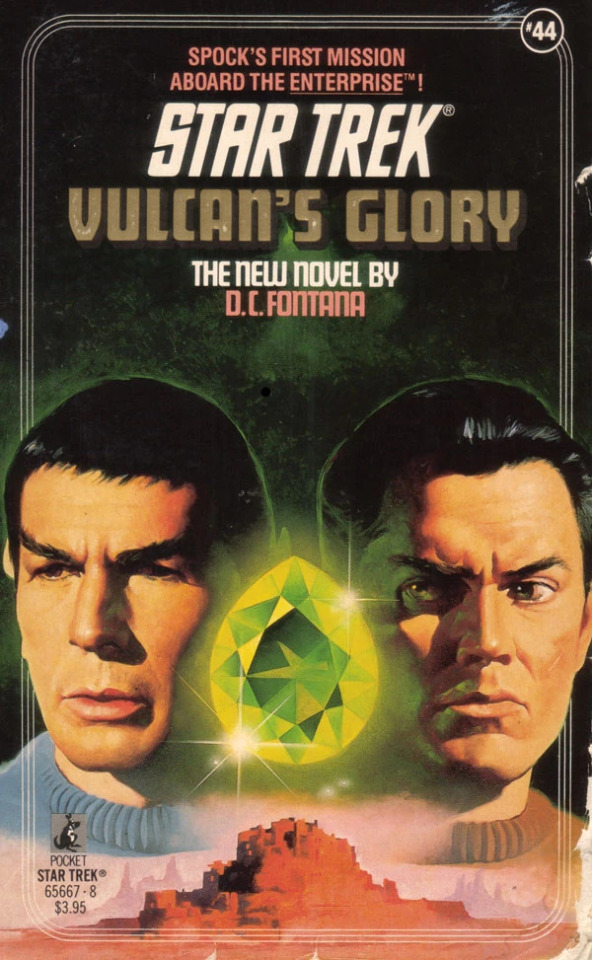
D.C. Fontana’s only Star Trek novel, “Vulcan’s Glory,” was one of the earliest attempts to give the character a backstory, and was the most consequential long term. The first novel set in the era of the first Star Trek pilot with Captain Pike and a young Spock, "Vulcan's Glory" identified Number One as being an Illyrian, a race of human-like beings who specialize in species wide breeding programs and genetic improvement. This genetic superiority is why she was cool, intellectual, aloof, and a bit arrogant. Her nickname “Number One” came from the fact she was the supreme product of the hyper-competitive Illyrian system, and won at everything from academics to athletics. According to DC Fontana, her actual Illyrian name is impossible to pronounce, so when dealing with humans, she assumed the human name “Una Chin-Riley.” Una of course, being “Number One” in Greek.

As DC Fontana is such an important figure in Star Trek history and only actually wrote one Star Trek novel in her life, many future materials used the backstory established in “Vulcan’s Glory,” like the David Stern Pike-era novels of the 2010s....but more importantly, the Discovery and Strange New Worlds series, which canonized the “Una Chin-Reilly” name by using it on screen (I remember gasping when Pike called her Una in a Discovery episode, meaning they were going with the Fontana backstory, a detail that may not have been significant to the casual viewer). Since DC Fontana wrote “Vulcan’s Glory” in the 80s, a lot more information was learned about the role of genetic engineering in the Federation, however, and interesting things were done in that series to bring her in line with everything we’ve learned since in Deep Space 9 and Enterprise about augmentation and the society wide prejudice against it. For example, they established that the fact Number One was Illyrian was not public knowledge, but that she pretended to be human her entire life.

The one person who didn’t see fit to give her a backstory or even a real name was John "Johnny Redbeard" Byrne in his comic series about the Cage era Enterprise, who thought the mystery of the character was the most interesting thing about her, and he was deliberately cagey about any details. To Johnny Redbeard, she was just “Number One.” There was a running joke that every time someone says her actual name, or when we see her personnel file, it was blurred out, or somebody’s thumb was over it, and so on. It was rather like the running joke where Mr. Burns never remembers Homer Simpson's name. Johnny Redbeard loves mystery men and women who don't talk about their past, since that was the characterization he famously gave to Wolverine in his X-Men comics.


The one detail of Number One's past that is clear is that Number One in Byrne's comics is competent, mysterious, and has mystique, certainly, but she is completely human, without any powers. Byrne always got exasperated that his X-Men co-creator Chris Claremont added fantastical and far out details to the background of X-Men characters (like how Nightcrawler's girlfriend Amanda turned out to be a sorceress) because he felt "some people should just be allowed to be normal." Byrne always said his original idea for Wolverine's "true" backstory was that he was a Vietnam veteran in intelligence who volunteered for bionic experiments that wiped his memory, and disliked the idea he was immortal, and vetoed the very, very early Dave Cockrum idea Wolverine was an actual mutated wolverine who achieved sentience and a human shape (which early X-Men comics hint at). Byrne was reportedly enraged that they gave Moira MacTaggart a mutant power, as he saw her as just being a scrappy Scottish housekeeper.

Johnny Redbeard didn’t give Number One a past (other than to show she was on the Enterprise's shakedown cruise with Robert April as a rookie officer), but he did give her a future, as he showed an older Number One as a starship commander in the Kirk era (aging gracefully with a white tuft like Tongolele), and later, a flag officer in the Motion Picture era.

To what extent are these backstories compatible? Well, with what we currently know about Number One, that she hid her true species and status to avoid prejudice, it could be that some of the other versions were tall tales she spread to obscure her true origins. The John Byrne idea she served as an Ensign with Robert April in the Enterprise's very first mission hasn't been confirmed, but hasn't been denied, either. The Peter David "Morgan Primus" backstory is completely incompatible, but perhaps there are some elements to it that are true, like the idea that the early part of her career involved working as a computer engineer in artificial intelligence, which is why the computer has her voice.
550 notes
·
View notes
Text
ian constantly on the lookout for stupid petnames to call mickey because he loves being silly and he loves annoying his husband.
kitten. baby boo. pumpkin pie. the list is endless and so is the fun, a couple of them ian uses so often that they start worming their way into his regular rotation, sticking without either of them realizing before it's too late. ("baby girl can you pass the smokes?" "what the fuck'd you just call him?" "why don't you mind your business lip - he ain't talkin' to you.")
of course mickey protests in the beginning - eye rolls, cursing, the whole shebang. but ian can tell he gets a silly little kick out of it too, which fuels his proverbial 'taking a mile' after being given an inch.
it's been a while since a new nickname has cropped up in the wild, so ian's itching for some fun. which is probably why it's so hard to fight his giddy smile when they both hear it on the tiktok, the girl's voice-over ushering in a brand new era for them. "making dinner for pookie after his twelve hour shift."
the beat that follows settles over them like a ton of bricks. something breaks in ian's space/time continuum as he tries like hell not to smile, especially as he feels mickey flick his eyes over to him. warning. unflinching.
"no," mickey declares. and then when ian attempts a look of innocence, "don't even fuckin' think about it."
"think about what?"
"don't gimme that shit." but there's a little tug at the corner of his mouth. "ian."
"i'm not thinkin' about anything, pumpkin." ian squeezes mickey's thigh for good measure, and then gets to his feet.
"where ya goin'?" mickey cranes his neck after him, clearly wary. this can't possibly be over so soon, he's probably thinking.
and he's right, of course. he always is when it comes to these things. "just gonna get a start on dinner." ian backtracks to leave a smooch on top of mickey's head, and then move to the kitchen. but not before trying it on for size for the first time, the pure joy bouncing around in his chest when he says it. "you stay here and look cute, okay pookie?"
he's just out of range of mickey's flail of retaliation. the protest, though, he hears loud and clear. even over his own giddy laughter. "motherfucker i'll show you pookie!"
damn, he hopes this one sticks.
#pookie milkovich as i live and breathe#''ray what is this'' idk but you're gonna read it alright#gallavich
253 notes
·
View notes
Text
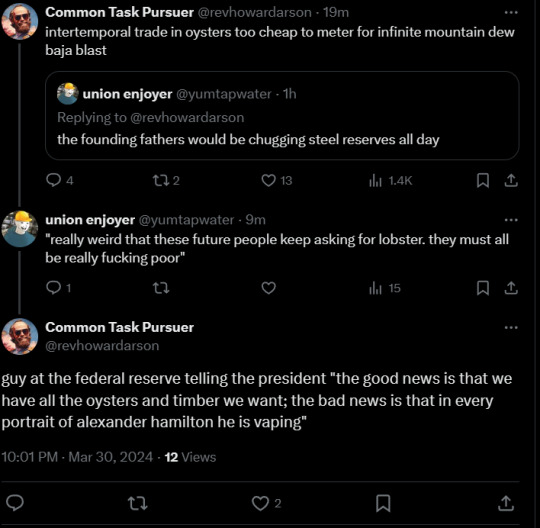
SITUATION
In an alternate history where time travel has been invented, a cabal of time-traveling traders and politicians are engaged in intertemporal arbitrage, using their future knowledge to corner markets throughout history. They've recently set their sights on the oyster trade of 19th century New York City, hoping to use their advanced refrigeration tech and insider info to make a killing. But their actions are destabilizing the timeline and threatening to erase key historical figures from existence. The party must unravel this temporal trade network and confront the mysterious mastermind behind it all before irreparable damage is done to the space-time continuum.
SETTING
The adventure spans multiple eras, but key events occur in:
New York City, 1842 - The booming oyster trade has made the city the oyster capital of the world. Oyster cellars line Canal Street, shucking a staggering 700 million oysters a year. The docks bustle with oystermen.
The Far Future Oyster Vaults of Neo-Nassau, 2891 AD - Towering refrigerated vaults hold trillions of perfectly preserved bivalves. Chrono-barges zip through pneumatic tubes overhead. Neon-lit canals crisscross the city.
The Temporal Trade Hub, Outside Time - A mind-bending nexus where past, present and future intersect. Causality-defying architecture shifts like a kaleidoscope. Traders haggle over price fluctuations yet to occur.
CAST
Crassus Rockefeller III - Robber baron, mastermind behind the Oyster Futures Syndicate. Seeks to monopolize history's oyster supply. Wields a Causality Anchor that stabilizes him in spacetime.
Vivian "Viv" Wellfleet - Rogue chrono-trader with a heart of gold. Wants to stop Crassus and restore the timeline. Former collegiate oyster shucking champion.
Shucker Jim - Grizzled 19th century oysterman. Secretly an undercover Chronoguard agent. Rocket harpoon prosthetic arm. Loyal but haunted by a tragic past.
The Muculent Sibyl - Prophetic oyster-human hybrid from an alternate timeline where oysters evolved sapience. Whispers maddening future-truths. Chained in Crassus' vault.
Ostreida, the Oyster Goddess - Eldritch bivalve deity worshipped by a future oyster-cult. Seeks to flood Earth's history, returning it to a primordial sea.
The Chronoguard - Temporal law enforcement. Hardened time-cops in chromed exo-suits. Seek to stop illegal intertemporal trade by any means necessary.
The Oystermen's Union - Tough New York oyster workers, their livelihoods threatened by future sabotage. Burly, bearded, and brawny. Know the oyster beds like the back of their callused hands.
INITIAL CONDITIONS
The 19th century oyster trade is booming, but prices have started fluctuating wildly and oyster shortages loom due to temporal meddling. Anachronistic tech has been found in oyster beds. Strange future-cultists lurk in oyster cellars, preaching the coming of an Oyster God. The Chronoguard has dispatched agents to 1842 to investigate, but Crassus' syndicate has a head start and deep pockets. The timeline is already fraying at the edges - historic oyster-lovers like Queen Victoria are fading from existence. The players arrive in old New York to find a temporal powder keg ready to blow.
GOALS
Crassus Rockefeller III - Corner the oyster market across all of history, making trillions. Ascend to economic godhood.
Vivian "Viv" Wellfleet - Stop Crassus, restore the original timeline, save the future. Maybe shuck some oysters along the way.
Shucker Jim - Complete his mission, avenge his partner, keep the space-time continuum safe from rogue traders and their greed.
The Muculent Sibyl - Escape her imprisonment, reveal cosmic truths, bring about the Oyster Singularity her visions foretell.
Ostreida, the Oyster Goddess - Flood Earth's history, make the world a oyster's paradise. Destroy upstart humanity.
The Chronoguard - Arrest Crassus and his cronies, stop the temporal trade in its tracks, preserve the integrity of the timeline.
The Oystermen's Union - Protect their way of life, drive out strange future interlopers, keep oyster prices stable and bellies full.
TOOLS/RESOURCES
Crassus Rockefeller III - Vast wealth, future tech, Causality Anchor, bribed officials across eras, oyster futures contracts.
Vivian "Viv" Wellfleet - Heirloom chrono-compass, knack for disguise, knowledge of oyster lore, her trusty quantum-shucking knife.
Shucker Jim - Rocket harpoon arm, Chronoguard combat training, 19th century street smarts, loyal oystermen contacts.
The Muculent Sibyl - Precognition, psychic whispers, eldritch oyster magic, fanatical mollusk-hybrid cultists.
Ostreida, the Oyster Goddess - Divine bivalve powers, oyster monster hordes, tidal magic, beachhead temples across history.
The Chronoguard - Jurisdiction across spacetime, stun-harpoons, chrono-cuffs, hardened exo-suits, orbital trawler-ships.
The Oystermen's Union - Strength in numbers, intricate knowledge of oyster beds, sturdy oyster boats, shucking solidarity.
SAMPLE SOLUTIONS
Infiltrate Crassus' syndicate posing as fellow traders, destabilize his operations from within while searching for evidence of his crimes. Coordinate with Chronoguard to arrest him in a dramatic sting.
Rally the Oystermen's Union to sabotage future tech and resist the Syndicate's strong-arm tactics. Stage a general strike to force the city to crack down on rogue traders.
Beat Crassus at his own game by cornering the oyster market first. Flood the market with your own supply via time travel, tanking prices and ruining his monopoly.
Cut a deal with Ostreida, brokering a compromise where oysters and humans can coexist across history. Use her power to threaten Crassus into surrendering.
Rescue the Muculent Sibyl and convince her to aid you with her prescient visions. Navigate the fluctuating timeways to always stay one step ahead of Crassus and his goons.
167 notes
·
View notes
Note
What is the appeal of vintage computers to you? Is it the vintage video games or is it the programs? If so, what kind of programs do you like to run on them?
Fair warning, we're talking about a subject I've been passionate about for most of my life, so this will take a minute. The answer ties into how I discovered the hobby, so we'll start with a few highlights:
I played old video games starting when I was 9 or 10.
I became fascinated with older icons buried within Windows.
Tried to play my first video game (War Eagles) again at age 11, learned about the hardware and software requirements being way different than anything I had available (a Pentium III-era Celeron running Windows ME)
I was given a Commodore 1541 by a family friend at age ~12.
Watched a documentary about the history of computers that filled in the gaps between vague mentions of ENIAC and punch cards, and DOS/Windows machines (age 13).
Read through OLD-COMPUTERS.COM for the entire summer immediately after that.
Got my first Commodore 64 at age 14.
I mostly fell into the hobby because I wanted to play old video games, but ended up not finding a ton of stuff that I really wanted to play. Instead, the process of using the machines, trying the operating system, appreciating the aesthetic, the functional design choices of the user experience became the greater experience. Oh, and fixing them.
Then I started installing operating systems on some DOS machines, or playing with odd peripherals, and customizing hardware to my needs. Oh, and programming! Mostly in BASIC on 8-bit hardware, but tinkering with what each computer could do is just so fascinating to me. I'm in control, and there isn't much of anything between what I write and the hardware carrying it out (especially on pre-Windows machines)! No obfuscation layers, run-times, .dlls, etc. Regardless of the system, BASIC is always a first choice for me. Nova, Ohio Scientific, Commodore, etc. I usually try to see what I can do with the available BASIC dialect and hardware. I also tend to find a game or two to try, especially modern homebrew Commodore games because that community is always creating something new. PC stuff I focus more on pre-made software of the era.
Just to name a few examples from a variety of systems: Tetris, terminal emulators, Command & Conquer titles, screen savers, War Eagles, Continuum, video capture software, Atomic Bomberman, demos, LEGO Island, Bejeweled clones, Commander Keen 1-3, lunar lander, Galaxian, sinewave displays, 2048, Pacman, mandelbrot sets, war dialers, paint -- I could keep going.
Changing gears, I find it funny how often elders outside of the vintage computing community would talk about the era I'm interested in (60s-early 90s). [spoken with Mr. Regular's old man voice]: "Well, computers used to be big as a room! And we used punch cards, and COBOL!" I didn't know what any of that meant, and when pressed for technical detail they couldn't tell you anything substantial. Nobody conveyed any specifics beyond "that's what we used!"
I noticed that gaps remained in how that history was presented to me, even when university-level computer science and history professors were engaged on the subject. I had to go find it on my own. History is written by the victors, yeah? When was the last time a mainstream documentary or period piece focused on someone other than an Apple or Microsoft employee? Well, in this case, you can sidestep all that and see it for yourself if you know where to look.
Experiencing the history first hand to really convey how computers got from point A to B all the way down to Z is enlightening. What's cool is that unlike so many other fields of history, it's near enough in time that we can engage with people who were there, or better yet, made it happen! Why do you think I like going to vintage computer festivals?
We can see the missteps, the dead-ends, the clunkiness, the forgotten gems and lost paradigms, hopefully with context of why it happened. For the things we can't find more information on, when or documentation and perspectives are limited, sometimes we have to resort to digital archeology, and reverse engineering practices to save data, fix machines, and learn how they work. The greater arc of computer history fascinates me, and I intend to learn about it by fixing and using the computers that exemplify it best, and sharing that passion with others who might enjoy it.
167 notes
·
View notes
Text
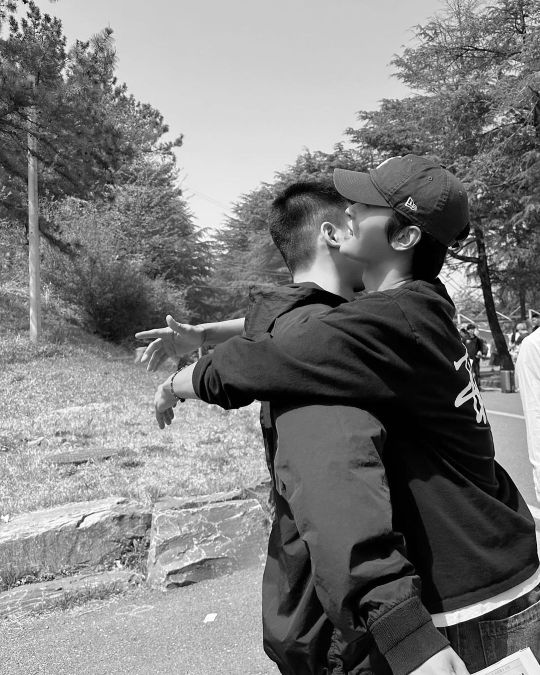





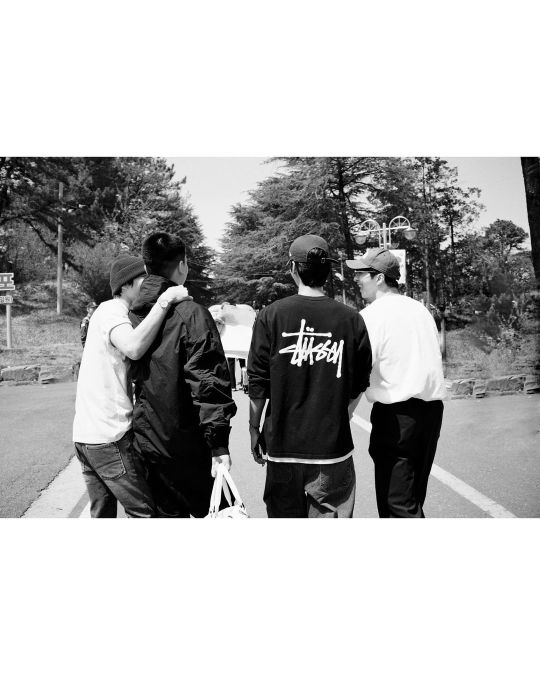
vixx
#vixx#n#leo#hyuk#ken#hakyeon#cha hakyeon#hakyeon vixx#n vixx#leo vixx#hyuk vixx#ken vixx#vixxnetwork#vixxsource#kboys#kboysnet#bgnet#bgnetwork#bgarchivee#malegroupsnet#dailybg#era: continuum
8 notes
·
View notes
Text



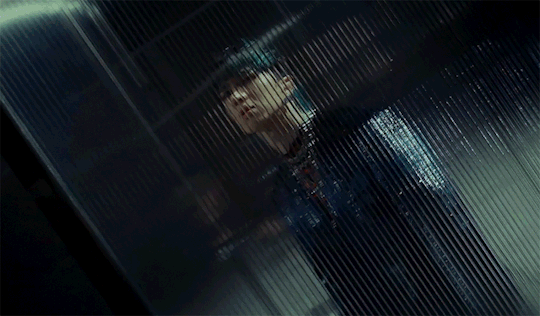

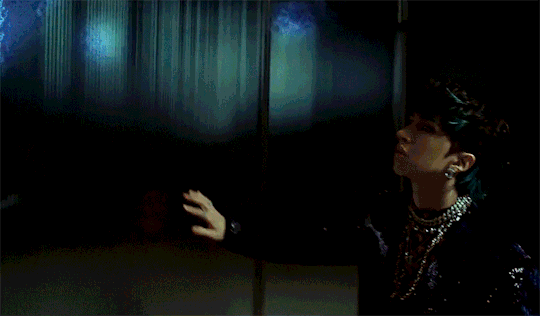
VIXX - AMNESIA MV [23.11.21]
#vixx#vixx amnesia#continuum era#vixx ken#lee jaehwan#jaehwan#my gifs: vixx#my gifs: jaehwan#hes stunning.... beathtaking even#i cant stop LOOKING AT HIM!!!
144 notes
·
View notes
Text
"My father was born in 1905 in Bethlehem as an Ottoman citizen with Ottoman identification papers. As a teenager he witnessed the Ottomans being replaced by the British, and suddenly, almost overnight, he became a citizen of Mandate Palestine with a Palestinian passport issued by the British Mandate government. In 1949, when Bethlehem became part of Jordan, he became suddenly a citizen of the Hashemite Kingdom of Jordan. And when he died in 1975, he died under Israeli occupation with an ID card issued by Israel. But he was the same person throughout those geo-political vicissitudes and had no choice but to adjust to changing political and imperial realities.
Throughout Palestinian history empires have occupied the land for a certain number of years but were then forced to leave. Most of the time an empire departed only to make space for another empire. The majority of the native people of the land seldom left. Throughout history and starting with the Assyrian Exile, only a small minority was deported, and only a small percentage decided to leave. The vast majority of the native people remained in the land of their forefathers (2 Kgs 25:11). They remained the Am Haaretz, the native 'People of the Land,' in spite of the diverse empires controlling that land. This is why in this book I choose the people of the land as the description for the native inhabitants throughout history, for it is they who are the enduring continuum.
Their identity, however, was forced to change and develop according to the new realities and empires in which they found themselves. They changed their language from Aramaic to Greek to Arabic, while their identity shifted from Canaanite, to Hittite, to Hivite, to Perizzite, to Girgashite, to Amorite, to Jebusite, to Philistine, Israelite, Judaic/Samaritan, to Hasmonaic, to Jewish, to Byzantine, to Arab, to Ottoman, and to Palestinian, to mention some. The name of the country also changed from Canaan to Philistia, to Israel, to Samaria and Juda, to Palestine. ... And yet they stayed, throughout the centuries, and remained the people of the land with a dynamic identity. In this sense Palestinians today stand in historic continuity with biblical Israel. The native people of the land are the Palestinians. The Palestinian people (Muslims, Christians, and Palestinian Jews) are a critical and dynamic continuum from Canaan to biblical times, from Greek, Roman, Arab, and Turkish eras up to the present day. They are the native peoples, who survived those empires and occupations, and they are also the remnant of those invading armies and settlers who decided to remain in the land to integrate rather than to return to their original homelands. The Palestinians are the accumulated outcome of this incredible dynamic history and these massive geo-political developments."
Mitri Raheb, Faith in the Face of Empire: The Bible Through Palestinian Eyes (2012)
195 notes
·
View notes
Text
1900s futurism

I'm on tour with my new, nationally bestselling novel The Bezzle! Catch me in TUCSON (Mar 9-10), then SAN FRANCISCO (Mar 13), Anaheim, and more!

I'm profoundly skeptical of the idea that the future can be predicted, and doubly skeptical that sf writers are any kind of prophet. The former grotesque fatalism (if the future can be predicted, then what we do doesn't matter); the latter is tragicomic hubris.
If you'd like an essay-formatted version of this thread to read or share, here's a link to it on pluralistic.net, my surveillance-free, ad-free, tracker-free blog:
https://pluralistic.net/2024/03/07/the-gernsback-continuum/#wheres-my-jetpack
That said, few people have been more consistently useful in understanding and anticipating (and yes, building) the future than my friend and colleague Karl Schroeder, whom I've known since I was 16 years old. Karl was the first person I heard say the world "internet." Also: "fractal," "World Wide Web," "ftp," and numerous other touchstones of the future just over the horizon.
Karl is, in fact, a futurist ("foresight consultant") who approaches the work with the same shrewd insight, wild imagination and humility that he brings to his fiction. In a new essay written with both his futurist and sf writer hats on, he nails down the toxic shadow cast by the 20th century sf, or, as he calls it, "The Science Fiction of the 1900s":
https://kschroeder.substack.com/p/the-science-fiction-of-the-1900s
Karl starts by describing the odd "double vision" of the future of the 1900s. On the one hand, many of us (myself included) were convinced that nuclear armageddon was inevitable. Unlike the unhinged architects of the nuclear arms-race, realists understood that a nuclear war would effectively end the future. As Einstein put it, "I know not with what weapons World War III will be fought, but World War IV will be fought with sticks and stones."
But the flipside of that certainty that the future would end with the first nuclear strike was the belief that if we could just somehow walk the tightrope over the chasm of nuclear holocaust, we'd emerge in a future worth looking forward to: "a new era of peace and prosperity for all."
Contrast that with the existential dread of today's polycrisis: environmental collapse and political decay up to and including fascism. These aren't the binary proposition of nuclear annihilation vs Utopia – rather, they're a continuum of worse-and-better outcomes of every description. As Karl writes: "It’s not that simple. Our future now is an exhausting spectrum of scenarios, each with its own promise, and its own problems."
For Karl, we have entered a new epoch, but we've dragged in the long-expired way of imagining (and hence creating and navigating) the future with us. What makes this a new epoch? For Karl, it's the kind of future on our horizon. He cites Charles C Mann’s 1491, a superb history of the Americas before Columbus:
https://www.penguinrandomhouse.com/books/107178/1491-second-edition-by-charles-c-mann/9781400032051/readers-guide/
1491 radically reframes "the patchwork of propaganda and inference" that makes up the received narrative of the so-called "New World." It describes a land of flourishing cities, art, science and culture "in the Americas while Rome was just getting its act together." Contact with colonizing Europeans was a disaster for First Nations people, who call this period "The Invasion." It was an epochal break.
Futurism is an inextricably historical discipline. The willingness of some settler-colonialists states to consider this epochal break forces us to reframe our literal place in history, the story of the land under our feet. At its best, this futuro-historical work can begin the long work of reconciliation, as with the Canadian government's promise of $23b in reparations for the First Nations people who were kidnapped as children and sent to murderous "residential schools" before, during and after the Sixties Scoop.
The sf of the 1900s is no longer fit for purpose, if it ever was. It's a literature that was steered by open fascists like John W Campbell, who explicitly saw the literature as a means of inculcating a societal narrative of the triumph of white, corporate technocracy over all other forms of government:
https://locusmag.com/2019/11/cory-doctorow-jeannette-ng-was-right-john-w-campbell-was-a-fascist/
Karl isn't the first sf writer to try to overturn this orthodoxy – indeed, it was continuously challenged by radicals within the field, as with the New Wave, personified by the likes of Samuel Delany and Judith Merril (who both mentored and introduced Karl and me):
https://pluralistic.net/2020/08/13/better-to-have-loved/#neofuturians
The cyberpunks took a good hard run at it, too. For plenty of writers (including me), Bruce Sterling and William Gibson's 1981 story "The Gernsback Continuum" was a wake-up call:
http://writing2.richmond.edu/jessid/eng216/gernsback.pdf
Not for nothing, William Gibson has long insisted that his 1984 classic Neuromancer should be read as utopian: after all, it depicts a future in which the inevitable nuclear war only reduces a few cities to radioactive ash, sparing the rest of the planet.
Bruce Sterling once paid me the supreme compliment of describing a 2003 story I wrote about the ways that algorithms will enshittify self-driving cars as "making everybody else in the business look like they live in a dark basement growing on the mulch from old STAR TREK scripts":
https://craphound.com/stories/2005/10/12/human-readable/
Schroeder – along with today's new radical sf writer cohort – wants to fashion a fictional futurism that is fit for this world and its crisis: "in our modern technological society, science fiction tells us what to spend our time and money on." The fact that our mediocre billionaires are mired in the sf of the 1900s means that we're getting some decidedly old-fashioned futures.
For Karl, Musk is a poster-child for this profoundly conservative, backwards-looking vision: "He’s fighting the intellectual battles of the last century, a 1900s hero dropped into the 2000s with an unlimited budget to reshape the future to fit the era he’s from." Musk's obsessions – "Space flight. Settling Mars. Cyberpunk-style brain-computer interfaces. Artificial Intelligence. Self-driving electric cars. Humanoid robots." – are 1900s science fiction.
Ironically, much of this fiction labels itself "hard sf," despite the fact that interstellar travel is utter fantasy – as is mass-scale, near-term interplanetary civilization:
https://pluralistic.net/2024/01/09/astrobezzle/#send-robots-instead
Karl wants "a future for the 2000s." He points to some efforts to make this happen, like Neal Stephenson's Hieroglyph anthology, edited by Ed Finn and Kathryn Cramer:
https://www.harpercollins.com/products/hieroglyph-ed-finnkathryn-cramer
The "Hieroglyph" is Stephenson's shorthand for a recognizable, tangible, meme-able gizmo or other touchstone for a 2000s-era vision of the future – a replacement for jetpacks and flying cars. Karl's story for the anthology, "Degrees of Freedom," focuses on an abstraction (governance: "the single most important thing humanity can focus its creative energies on right now"), and by Karl's own admission, it's not quite the hieroglyph Stephenson was looking for.
But Karl did come up with a hieroglyph in a later work, the "deodands" of 2019's Stealing Worlds – a software agent "that believes it is some natural system, such as a river or forest, and acts in its own self-interest, that being the preservation and thriving of that natural system":
https://memex.craphound.com/2019/06/18/karl-schroeders-stealing-worlds-visionary-science-fiction-of-a-way-through-the-climate-and-inequality-crises/
(My own contribution to Hieroglyph was very gadget heavy – "The Man Who Sold the Moon," about autonomous lunar 3D printers. It won the Sturgeon Award):
https://memex.craphound.com/2015/05/22/the-man-who-sold-the-moon/
I've been impressed with Karl since the day I met him in 1987. There's no one whose thoughts on the future I'm more interested in hearing. I don't think that's a coincidence, either: Karl is an autodidact who was raised by a Mennonite TV repairman – the first TV repair shop in the Canadian prairies. If you want to understand the future, try being raised by someone who takes that kind of deliberate approach to which technology to adopt, and how.

Name your price for 18 of my DRM-free ebooks and support the Electronic Frontier Foundation with the Humble Cory Doctorow Bundle.

If you'd like an essay-formatted version of this post to read or share, here's a link to it on pluralistic.net, my surveillance-free, ad-free, tracker-free blog:
https://pluralistic.net/2024/03/07/the-gernsback-continuum/#wheres-my-jetpack
#pluralistic#science fiction#futurism#the future#reactionaries#tescreal#retrofuturism#scientifiction#karl schroeder#1491#genocide
122 notes
·
View notes
Text
I saw on Twitter that the Chapter 399 title is reference to this poem by Miyazawa Kenji (the "Be not defeated by the rain" poet):
(this panel ties the two poems together)

Preface
The phenomenon called I
Is one postulated, organic alternating-current-lamp
Blue illumination
(A complex of all transparent ghosts)
Together with scenes and with everyone
Busily, busily flickering
Very surely to keep on lighting,
One karmic alternating-current-lamp
Blue illumination
(Light persisting, its electric lamp lost)
These, from twenty-two months’
Direction sensed to be past
Papers and mineral ink assembling
(Everything that flickers with me
Everyone senses at the same time)
Continuing on to this,
Are links and links of light and shade,
Sketches of mental images as they are
About all this, people, galaxies, asuras and sea urchins
Eating cosmic dust, inhaling air or saltwater
Might think up fresh ontologies
But they are ultimately a mental climate
Yet surely these recorded scenes are
Each the very scene recorded as it is
And if it is nothing, nothing itself is as it is
And so to an extent is shared by everyone
(All is within me everyone
So everyone within each one is all)
Yet within the Cenozoic alluvial epoch’s
Enormous shining accumulation of time,
The words supposed to have been rendered correctly
In a light’s eclipse, time’s mere speck
(Or a billion years of Asura)
Might have already changed composition or quality
And yet both I and the typographer
Might sense them to be not changed at all,
That, as a tendency, is possible,
Really as we sense our receptive organs
And scenes and characters
Just sensing them in common,
So what is called records and histories, geological histories
Along with various data
(Under the temporal spatial constraints of karma)
Are no more than what we sense
Perhaps two thousand years from now
A pertinently different geology will be adopted
Relevant evidence will emerge one by one from the past
So everyone will think that two thousand years before
There were colorless peacocks filling the blue sky
And then aspiring scholars at the upper stratum of the atmosphere
From the place of glittering frozen nitrogen
Will excavate splendid fossils
Or might well find
In a stratified plane of Cretaceous sandstone
Gigantic footprints of transparent humankind
All these propositions are asserted
As properties of images or time itself
In the fourth dimensional continuum
And some explanation about the context and meaning of the poem from here:
Eternal Light
Kenji had a very good reason, too, to feel the burden of responsibility toward the weak and the meek. He was the eldest son of a man, Masajirō, who made a fortune running the town’s pawnbroking shop. In those days, pawnbroking was a far more respectable profession than it seems to be today. A small provincial town in a prefecture far from the centers of development in the Meiji era (1868–1912) lacked the banking facilities of the big industrialized trading cities. The Miyazawa family business provided essential financial services to the destitute farmers of the region.
As a boy Kenji witnessed many encounters in his father’s shop, where poor farmers came in with whatever they could barter for a bit of cash to feed their families. He grew up with a keen sense of guilt over this and saw it as one of his missions to repay the farmers by teaching them through his writing how to achieve happiness and comfort in life. Not only that, he became an expert on the use of fertilizer and worked tirelessly to increase its applications. Suffering from pleurisy and tuberculosis, it was his indefatigable—perhaps the right word is obsessive—missionary spirit and social activity for the betterment of the local farmers that led, in part, to an early death.
Kenji described himself as a blue light in the preface to his poem “Spring and Pandemonium.” The light that is Kenji flickers incessantly in harmony with all else in the universe. This light—the life of an individual—does not die out at death. He writes in this preface that it is only the lamp, or the body, that is lost. The light remains on, flickering forever.
Though we die, the light and its memory continue to shine; and it is that light that can be seen throughout the cosmos. That is why some of Kenji’s characters end up in the heavens. Campanella, one of the heroes of his exquisite novel Ginga tetsudō no yoru (trans. Night on the Milky Way Train), alights from a train that is traversing the night sky. Another character in this novel, the scorpion, becomes a star so that its body can provide light and heat for an age. Yet another, the nighthawk in “Yodaka no hoshi” (trans. “The Nighthawk Star”), flies straight up into the sky, also turning its body into a star.
Kenji’s characters defy time and space to set for us, if you will, shining examples.
194 notes
·
View notes